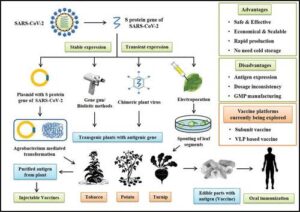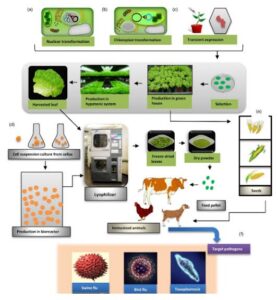Back to: MICROBIOLOGY 500 LEVEL
Welcome to class!
My sharp and forward-thinking scientist, welcome back! It’s always a pleasure to see you show up with the energy to learn. Today, we’ll look at something really exciting and very relevant to our Nigerian farms and food system—Microbial Applications in Plant Growth Promotion. Don’t worry if it sounds like a mouthful. Just like you know how pepper spices up jollof rice, microbes can boost plant growth in a natural, powerful way.
So let’s walk through it in a way that makes it simple, relatable, and practical—just like we always do at Afrilearn!
Microbial Applications In Plant Growth Promotion
What Are Plant Growth-Promoting Microbes (PGPMs)?

Microbes are tiny living organisms, mostly invisible to the eye—like bacteria and fungi. Some microbes live in the soil or on plant roots and help crops grow better, healthier, and faster. These helpful microbes are called Plant Growth-Promoting Microbes (PGPMs).
Just like a child grows well with good food and care, plants grow better when the soil around them is rich in friendly microbes.
How Do These Microbes Help Plants?
They provide nutrients
Some microbes fix nitrogen from the air, making it available for plants. Others help release phosphorus or potassium from the soil. This means the plant doesn’t need as much chemical fertiliser.
– Example: Rhizobium bacteria in groundnut or cowpea roots convert nitrogen from the air into a form the plant can use.
They make plants stronger against stress
PGPMs help plants withstand drought, salty soil, or poor nutrition. Think of it like giving your plant a “multivitamin”.
– Example: Azospirillum helps maize survive in dry conditions like we see in some northern Nigerian states.
They protect plants from diseases
Some microbes produce natural antibiotics or fight off harmful bacteria and fungi.
– Example: Trichoderma fungi protect crops like tomatoes from root diseases.
They help plant roots grow better
Microbes like mycorrhizae form a partnership with roots, expanding the root network so the plant can take in more water and nutrients.
– Imagine this: Just like you’d ask a taller friend to help reach the top shelf, plants use these fungi to reach nutrients deep in the soil.
Why Is This Important in Nigeria?
Many smallholder farmers can’t afford chemical fertilisers.
Overuse of chemicals harms our soil and water.
Nigeria’s tropical soil often lacks key nutrients.

PGPMs are a cheap, eco-friendly alternative to boost food production.
In places like Oyo, Nasarawa, and Kaduna, researchers are already working with farmers to introduce microbial products for crops like maize, rice, and cassava.
Summary
Microbial applications in plant growth promotion involve the use of beneficial microbes to improve crop nutrition, stress tolerance, and disease resistance.
These microbes include nitrogen-fixers, phosphate solubilisers, root enhancers, and biocontrol agents.
In Nigeria, they offer a cost-effective, natural solution to support farmers and protect the environment.
Evaluation
- What does PGPM stand for, and what do they do?
- Mention two ways microbes help crops grow better.
- Why are PGPMs useful for Nigerian farmers?
You’ve done a great job today, my future innovator! You now know how even the tiniest microbes can play a huge role in feeding our nation. With knowledge like this, you’re not just learning—you’re preparing to solve real-world problems and support African agriculture the smart way. Keep growing with Afrilearn—your future is already blooming!
